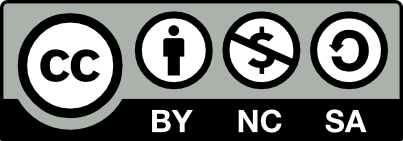Shooting Video--Camera Use, Angles, and Movement
Lesson Topic:
Shooting Video
Lesson Description:
Students will learn how to distinguish different video shots, angles, and movements by watching a professionally created movie trailer. Locate a movie trailer of your choice and convert it into a movie file that can be uploaded into a video editing software, such as iMovie. Students will then detach the audio so it is not a distraction while working during class. The next step will be to locate the different camera uses, angles, and movements as listed in the PowerPoint. Once the shots are located, students will split the video and use a freeze frame with on-screen text to key the name of the shot. An example would be "long shot with bird's eye view." Students should locate at least three examples for each of the camera uses, angles, and movements. Once done, the students will export their movie and submit for grading.
Once the time required for this assignment is past (2 days), the students will select a section of their video and show to the class explaining why they think the producer used that particular technique and the overall impact that technique had on the audience.
Learning Goals/Outcomes:
The students will practice locating different camera uses as well different angles and movements used in professional videos. Once students have learned how powerful different uses, angles, and movements can be, students will begin practicing how to produce their own dynamic pieces of work in their next lesson.
Nebraska Standards:
CIS.HS.1.2 Create and edit images and graphics.
CIS.HS.1.2.b Demonstrate a variety of photo/video shots using a digital camera or video camera (e.g., close up, wide-shot, over the shoulder).
Teacher Planning:
Equipment/Materials/Software Needed:
Students will need to refer to the slideshow, Shooting Video, to make appropriate references on the Movie Trailer provided.
Teachers will want to locate a movie trailer that the students will use for the project. An example that I used was "A Quiet Place" from 2018--https://youtu.be/WR7cc5t7tv8, but any trailer would work.
Time Required for Lesson:
This lesson should be completed in 2 class periods (55 minute period).
Diagram/Setup:
Each student will need the movie trailer converted into a movie file. They will also need to have some background knowledge of their video editing software prior to this lesson.
Technology Use:
Software:
PowerPoint or PDF viewing software
Video-editing software
Hardware:
The only hardware that might be needed is ear buds. I have the students detach the audio from the movie so it's not distracting, but if you keep the audio in, then you will need ear buds if students are working during class. Another reason I detach the audio is so it does not distract the student from only looking for video techniques. Sometimes the audio prevents them from seeing the video. Music is very powerful and keeps a person from actually seeing how a movie is shot.
Instructional Plan:
Anticipatory Set/Pre-Activity:
Students will participate in a group discussion using the Shooting Video slideshow provided above. This could be assigned as a flipped assignment so the discussion could go faster during class. Once students have discussed the different camera uses, angles, and movements, watch a movie trailer as a group.
Benefits/Explanation/Real-World Connection:
Students will see how real-world movie trailers are produced and learn the impact different video techniques have on the deliverable.
Activities (i.e. instructions, warm-up, lesson, cool-down):
As a class, students will watch the selected movie trailer. Discussion will include how to detect camera uses, angles, and movements within the trailer. Students will then begin the assignment by uploading the movie trailer file to their video-editing software and begin identifying different techniques.
Closure:
The closure will happen after the final day. Students will show parts of their selections and explain why the producer of the video used that particular technique and the effect that was sought.
Assessment :
Students will submit their movie that includes their splits, freeze frame, and on-screen text describing the different video camera use, angles, and movements.
Supplemental Information:
Modifications:
NA
Safety Precautions:
NA
Comments (adaptations for various grades/ages, teaching styles, etc.)
NA
Resources:

CC by Non-Commercial Share-Alike